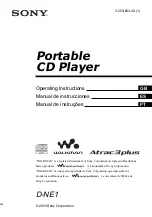
NOTE:
On an HP 9000 server, the boot disk is not partitioned so the physical volume refers
to the entire disk, not the HP-UX partition. Use the following command:
# pvchange -a N /dev/disk/disk14
3.
Replace the disk.
For the hardware details on how to replace the disk, see the hardware administrator’s guide
for the system or disk array.
If the disk is hot-swappable, replace it.
If the disk is not hot-swappable, shut down the system, turn off the power, and replace the
disk. Reboot the system. Two problems can occur:
•
If you replaced the disk that you normally boot from, the replacement disk does not contain
the information needed by the boot loader. In this case, interrupt the boot process and
boot from the mirror boot disk, which is configured as the alternate boot path.
•
If there are only two disks in the root volume group, the system probably fails its quorum
check as described in
“Volume Group Activation Failures” (page 111)
. It can panic early
in the boot process with the message:
panic: LVM: Configuration failure
In this situation, you must override quorum to boot successfully. Do this by interrupting
the boot process and adding the
–lq
option to the boot command.
For information on the boot process and how to select boot options, see HP-UX System
Administrator's Guide: Configuration Management.
4.
Notify the mass storage subsystem that the disk has been replaced.
If the system was not rebooted to replace the failed disk, then run
scsimgr
before using the
new disk as a replacement for the old disk. For example:
# scsimgr replace_wwid –D /dev/rdisk/disk14
This command allows the storage subsystem to replace the old disk’s LUN World-Wide-Identifier
(WWID) with the new disk’s LUN WWID. The storage subsystem creates a new LUN instance
and new device special files for the replacement disk.
5.
Determine the new LUN instance number for the replacement disk.
For example:
# ioscan –m lun
Class I Lun H/W Path Driver S/W State H/W Type Health Description
========================================================================
disk 14 64000/0xfa00/0x0 esdisk NO_HW DEVICE offline HP MSA Vol
/dev/disk/disk14 /dev/rdisk/disk14
/dev/disk/disk14_p1 /dev/rdisk/disk14_p1
/dev/disk/disk14_p2 /dev/rdisk/disk14_p2
/dev/disk/disk14_p3 /dev/rdisk/disk14_p3
...
disk 28 64000/0xfa00/0x1c esdisk CLAIMED DEVICE online HP MSA Vol
0/1/1/1.0x3.0x0
/dev/disk/disk28 /dev/rdisk/disk28
In this example, LUN instance 28 was created for the new disk, with LUN hardware path
64000/0xfa00/0x1c, device special files
/dev/disk/disk28
and
/dev/rdisk/disk28
,
at the same lunpath hardware path as the old disk, 0/1/1/1.0x3.0x0. The old LUN instance
14 for the old disk now has no lunpath associated with it.
Disk Troubleshooting and Recovery Procedures
135
















































